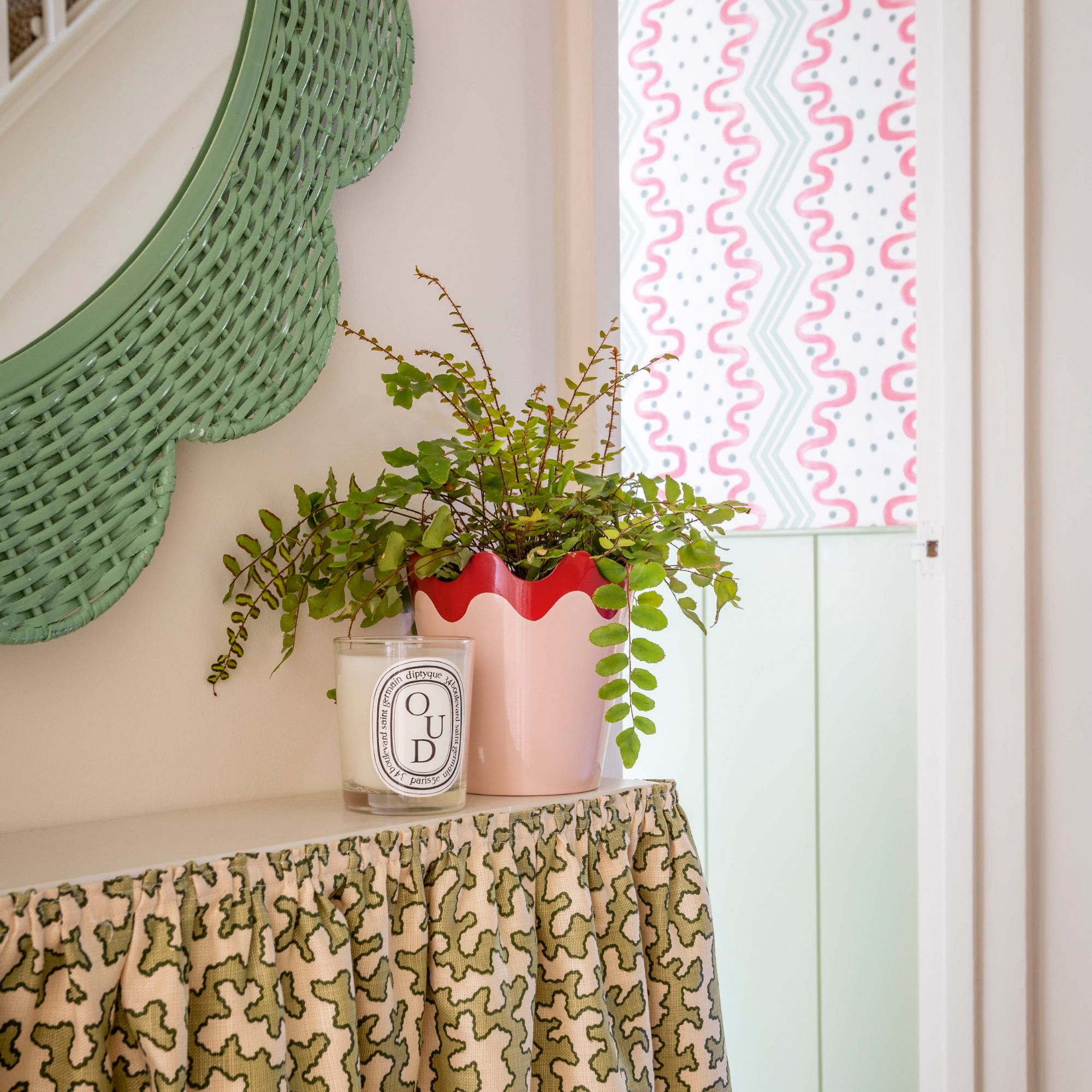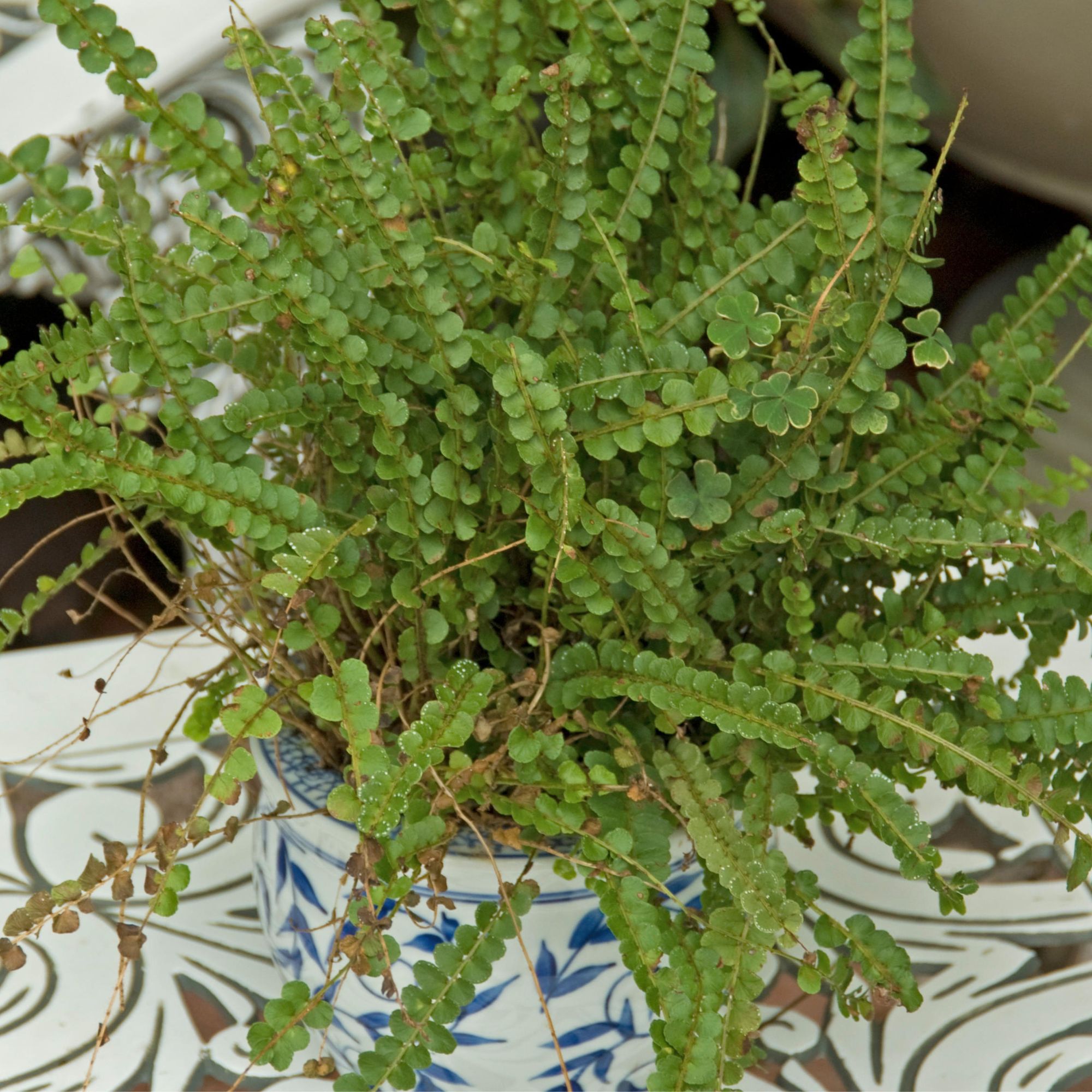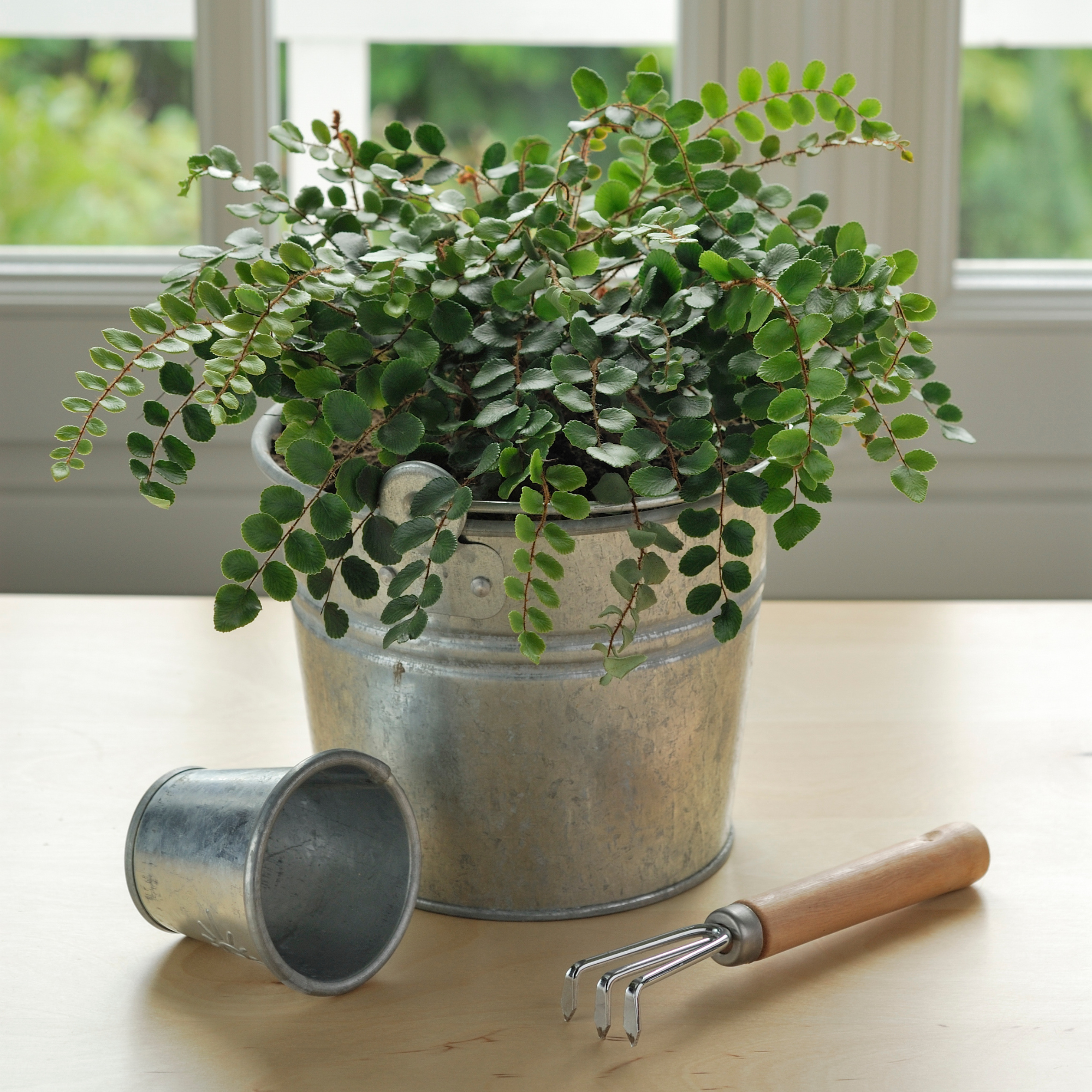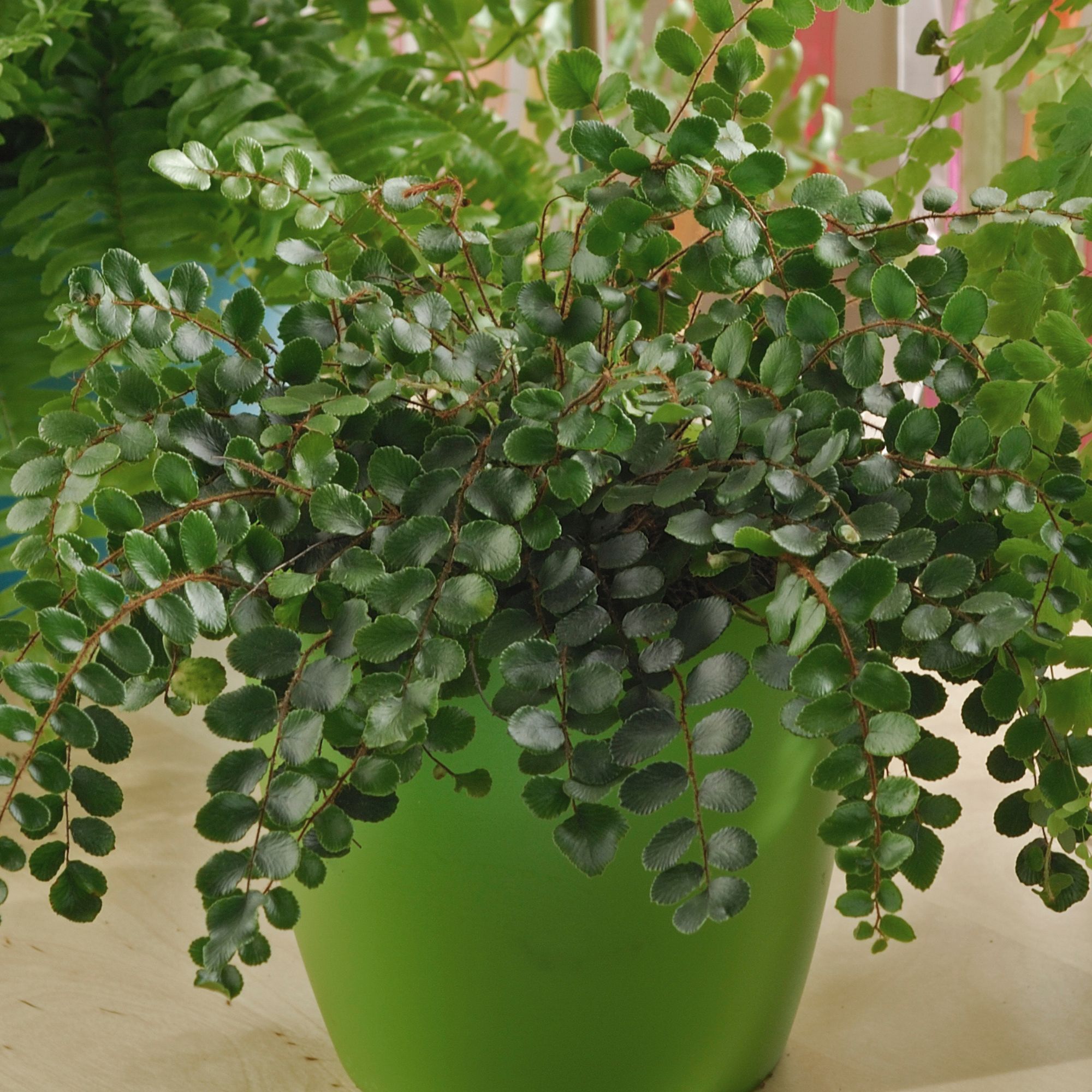
Learn how to care for button fern and you'll be rewarded with a beautiful evergreen houseplant that will be a stunning addition to your interior schemes.
Cute as a button, Pellaea Rotundifolia gains its nickname (button fern) from its smooth, circular emerald-green leaves. While less common than other houseplant ferns – such as the classic Boston variety – button ferns are still widely available at garden centres and online, and will be an unconventional addition to your houseplant ideas.
What you will need
- Button fern
- Plastic pot with drainage holes – one size larger than the size of the plant bought
- Decorative pot without holes
- A trowel, like this one from Amazon
- Fern compost, such as this from Grow Tropicals
Where to buy button fern
Where should I keep my button fern?
Found in the shaded forests and rocky outcrops of New Zealand, button ferns thrive in bright but dappled light and damp environments.
‘Direct sun is also fine, so long as they are not exposed to midday sun (which will scorch leaves). An east or west-facing windowsill would be a great spot for a button fern. Alternatively, grow it behind obscured glass such as in a bathroom,’ recommends Chris Taylor, RHS Horticultural Advisor.
While button ferns are more commonly seen as houseplants, they can also thrive outdoors during spring and summer (so long as temperatures remain above 12oc). ‘Outdoors, place in a pot in partially shaded spots under trees – this will prevent scorching,’ advises Andy Little, Houseplant Buyer at British Garden Centres. If growing outside, keep the plant in its plastic pot so that it is easy to move inside when the temperature drops – you can bury the pot beneath the soil level for a more seamless look.

How often should a button fern be watered?
Balance is key when it comes to watering button ferns. ‘Button ferns prefer consistently moist soil but are also highly sensitive to overwatering,’ explains Sonia Kainth from Grow Tropicals. Avoid overwatering by planting in a pot with drainage holes and using free-draining compost.
‘Always check the soil moisture before watering your button fern,’ adds Andy Little from British Garden Centres. ‘Stick your finger about an inch into the pot – if the top inch feels dry, it is time to get out the watering can. Water thoroughly until water drains out of the pot’s bottom.’ After an hour, empty the cover pot to prevent the fern from becoming waterlogged. Doing this will prevent you from needing to save an overwatered plant (which can be challenging).
The type of water is also important. ‘Using rainwater or distilled water will prevent the buildup of minerals that can be harmful to these ferns,’ advises Sonia.

Do I need to feed a button fern?
‘Button ferns are relatively low maintenance and don’t require excessive feeding. However, to promote healthy growth and vibrant fronds, use a balanced liquid houseplant food – like this Houseplant Focus one from Amazon – diluted to half-strength. Feed the fern once a month during the growing season, from spring to autumn,’ advises Andy Little from British Garden Centres.
Do button ferns need humidity?
Creating a humid environment is essential for ferns to thrive. ‘To boost humidity stand the pot on a wide tray of damp pebbles, or grow a steamy bathroom or kitchen,’ advises Chris Taylor from the RHS. Button ferns' love of humidity makes them one of the great bathroom plant ideas as they are a great plant for absorbing moisture in a bathroom
Button ferns also benefit from daily misting with a spray of room-temperature water. It is best to purchase a dedicated houseplant spray bottle as it can be difficult to ensure that any chemicals from a previous bottle have been cleared out. This one from Amazon is effective and affordable.
How often do I need to repot a button fern?
Button ferns are relatively slow-growing, making them very easy to care for houseplants. For this reason, repotting is only needed every few years, once the roots grow out of the drainage holes. ‘In terms of potting mix, ferns require a fine balance of moisture retention and drainage to help establish their fragile root systems,’ says Sonia Kainth from Grow Tropicals. Grow Tropicals stocks a specific fern potting mix, designed to provide the perfect environment for these plants – Grow Tropicals mix is also available on Amazon.
After repotting, place your fern in a slightly shadier spot than usual to avoid this common repotting houseplant mistake.

FAQs
Why is my button fern dying?
Chances are your button fern is dying because it has been underwatered or overwatered. An underwatered will likely have greying crispy leaves while limp plants are likely to be suffering from overwatering. The soil should be kept slightly moist to the touch and watered regularly.
Why does my button fern have brown leaves?
Browning on leaves suggests there is a lack of humidity. Thankfully, it's easy to fix. Simply raise the humidity by spraying the plant daily with room-temperature water. You can also move your button fern to room with higher humidity such as a bathroom or kitchen.







